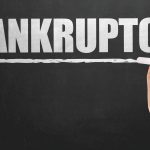In most Chapter 13 cases, debtors are required to continue (or resume) making regular monthly mortgage or auto loan payments directly to their lenders. Remember, lenders will be tracking your performance carefully, so it is important to remit them on time. Here’s some tips about making those payments.
From my experience, many lenders will not accept automatic checking account debits from Chapter 13 debtors. They want you to initiate the payment. So, your choices are to send a paper check or money order, to send an electronic check (by phone), or to wire the payment through some third party, like Western Union. The trick is to choose a method of sending payments that will get there on time, and that you can prove the lender received.
When you send an electronic check, you can prove the money came out of your bank account, and because the lender sets up the transfer of funds, you can also prove that they received the money. That is what you are looking for–the ability to prove BOTH that you made the payment and that the lender received it.
If you send a paper check, send it in a way that you can track when the lender receives it. Any of the overnight carriers, or the Post Office’s priority mail with delivery confirmation option, are fine. Don’t send it certified mail; it is slower and may cause your payment to be late. With a paper check, again, you know when it clears your account, and if you have a mail receipt, you have the records to prove that you make the payment. If you use a money order, you should send it the same way. Understand that it will take longer to prove that a money order has cleared, but it can be tracked.
My least favorite way for my clients to make mortgage payments is through a third party electronic transfer. The reason for that is that you can prove that you made the payment, but you cannot easily prove who received it. You are relying on that third party to properly direct the payment and properly identify your account so that your payment is credited to you. If a dispute ever arises, it can be difficult to track those payments. Obviously, if your lender asks you to make the payments that way (and I know some who do) and the lender sets it up for you, you should do as they request. But if you choose to use such services, be sure that you get the correct routing information from the lender, and check and double check that such information is accurately transcribed when you make your payment.
I can’t impress enough the importance of keeping good records of when and how you make your mortgage and auto loan payments. Although you may believe that you are remitting them on a timely basis, your lender, in their infinite wisdom, may not. I recently had a Chapter 13 debtor who received a motion to vacate the automatic stay. In the papers, the lender alleged that, although the Chapter 13 case was pending for 15 months, and the Chapter 13 plan was confirmed over a year ago, they had NEVER received a single post petition payment. The debtor in this case was on top of the situation, and followed my advise. She was able to provide me with copies of cancelled checks for each and every payment. As a result we were able to quickly resolve what could have been a horrific situation.
Diligence also applies to the remittance of Chapter 13 plan payments, but that is for another day….
